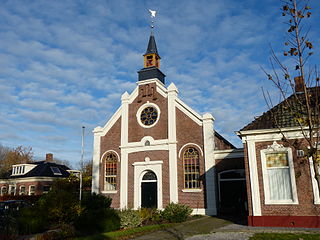
Ten Boer is a village and a former municipality in the northeastern Netherlands, in the province of Groningen. The municipality had a population of data missing in 2021; the village of Ten Boer has approximately 4,600 inhabitants. In 2019, it was merged into municipality of Groningen.

A manor house was historically the main residence of the lord of the manor. The house formed the administrative centre of a manor in the European feudal system; within its great hall were usually held the lord's manorial courts, communal meals with manorial tenants and great banquets. The term is today loosely applied to various English country houses, mostly at the smaller end of the spectrum, sometimes dating from the Late Middle Ages, which currently or formerly house the landed gentry.

Sauwerd is a village in the municipality of Het Hogeland, Groningen, Netherlands. Until the local government reorganization of 1990 the village was the head of the former municipality of Adorp.

Walworth is a central small village with outlying farmsteads, which together constitute a scattered village in the borough of Darlington and the ceremonial county of County Durham, England. It is a civil parish which does not have a church. The population of this civil parish at the 2011 Census was 240. It is situated 2.5 miles (4.0 km) to the north-west of Darlington. The nucleus of the central village is the 16th-century Walworth Castle, which is now a hotel. On the north side of the village, around North Farm, are earthworks signifying a lost settlement, grouped around a barn which was once a chapel.
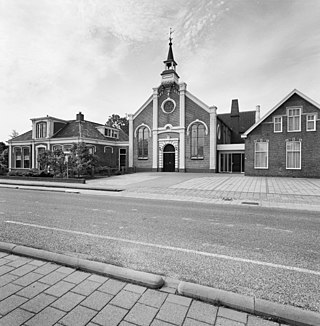
Roodeschool is a community situated in the northeast of Groningen province in the Netherlands and forming part of the municipality of Het Hogeland. It had a population of around 860 in January 2017.

Uithuizen is a village in the Dutch province of Groningen. It is located in the municipality of Het Hogeland. It had a population of 4,885 in January 2017.
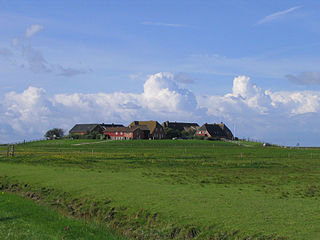
A terp, also known as a wierde, woerd, warf, warft, werf, werve, wurt or værft, is an artificial dwelling mound found on the North European Plain that has been created to provide safe ground during storm surges, high tides and sea or river flooding. The various terms used reflect the regional dialects of the North European region.
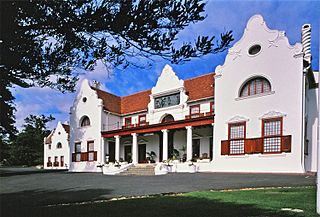
Groote Schuur is an estate in Cape Town, South Africa. In 1657, the estate was owned by the Dutch East India Company which used it partly as a granary. Later, the farm and farmhouse was sold into private hands. Groote Schuur was later acquired by William De Smidt, and remained in the family's possession until it was sold by Abraham De Smidt, Surveyor General of the Cape Colony, in 1878, and was bought by Hester Anna van der Byl of the prominent Van Der Byl / Coetsee family. In 1891 Cecil Rhodes leased it from her. He later bought it from her in 1893 for £60 000, and had it converted and refurbished by the architect Sir Herbert Baker. The Cape Dutch building, located in Rondebosch, on the slopes of Devil's Peak, the outlying shoulder of Table Mountain, was originally part of the Dutch East India Company's granary constructed in the seventeenth century.

The Fraeylemaborg is a borg in the village of Slochteren in the Netherlands. At present the Fraeylemaborg is a historic house museum. The museum had 31,509 visitors in 2013.

Alteckendorf is a commune in the Bas-Rhin department in the Grand Est region of northeastern France.
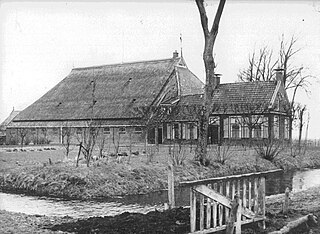
A "Head-Neck-Body farmhouse" or Head-Neck-Rump farmhouse is a typical Frisian farmhouse. It consists of a residence and a kitchen placed in line in front of a big shed. A striking fact is that the residence was never built in the centre front of the shed – this has to do with the origin of this type of farmhouse from a smaller type of farmhouse that has now disappeared. This original Old Frisian longhouse consisted of a residence with a cattle shed immediately behind it. The harvest was stacked in the attic or in open barns which were logically located near the livestock shed.
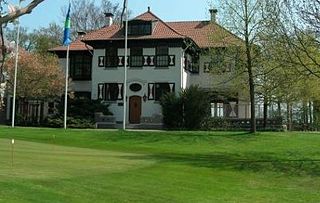
De Poll, formerly De Pol, is an estate at Pollselaan 5 south of Glimmen in the municipality of Groningen, Netherlands. The estate is located in the valley of the Drentsche Aa. The golf course of the Noord-Nederlandse Golf & Country Club has been located on the estate since 1953. The estate is covered by the Dutch 'Natural Beauty Act' (Natuurschoonwet) of 1928 that provides tax benefits to owners, usufructuaries and leaseholders of country estates.

Townhill Park House is a Grade II listed former manor house between the neighbouring housing estates of Townhill Park in Southampton and Chartwell Green in Eastleigh.

Groot Wetsinge and Klein Wetsinge are two villages in the municipality of Het Hogeland in the Dutch province of Groningen. The villages are less than half a kilometre apart and are often referred to together as Wetsinge. The closest village, at a distance of less than a kilometre to Wetsinge is Sauwerd.

The Piloersemaborg is a 17th-century borg (castle) in the village of Den Ham in Groningen in the Netherlands. It currently houses a restaurant.

Schathoes Verhildersum was a restaurant in Leens in the Netherlands, on the estate of Verhildersum. It was a fine dining restaurant that was awarded one Michelin star in 2004 and retained that rating until 2012.

The Wedderborg is a borg, a type of castle in Groningen, in the village of Wedde in the Netherlands. The building has 14th, 15th, and 16th-century elements and is currently used as a hotel and restaurant.

Ten Post is a village in the Dutch province of Groningen. It is part of the municipality of Groningen. The village is located along the Damsterdiep and about 14 kilometres (8.7 mi) from Groningen.

Feerwerd is a village in the municipality of Westerkwartier in the province of Groningen in the Netherlands. As of 2021, Feerwerd had a population of 520.
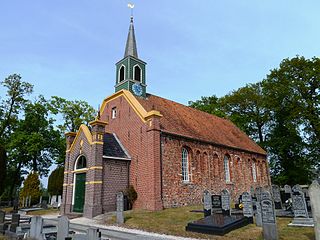
Nuis is a village in the municipality of Westerkwartier in the province of Groningen in the Netherlands. As of 2021, it had a population of 670.























